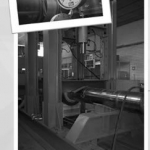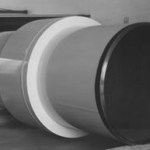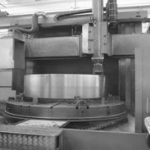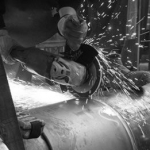Corrosion is destroying approximately 30% of the world’s annual production of steel. Where you find pipelines for gas an oil distribution system, you will also find a range of isolation joints. The correct location of a monolithic isolation joint results in saving overall cost of corrosion control systems.
For onshore projects, an isolation joint is used to limit the spread and hence cost of cathodic protection current to those pipes that need to be effectively and economically protected by the main CP system.
An isolation joint is used to electrically “split up” long pipelines into distinctive system. Or to isolate and ensure that CP or stray electricity currents do not cause increased corrosion.
Or to provide protection against earthing currents at domestic and industrial premises where the PME (Protection Multiple Earthing) system is in use.
Why using Monolithic Insulation Joints is the best choice for Engineering Pipeline Projects :
¨ Insulation Joints serve as a positive leak proof, long lasting block against the flow of electric currents in all piping systems, causing corrosion and leakeges.
¨ Eliminate Short Circuits: Bolt, Sleeves and Washers are the major cause of short circuits in most isolation assemblies are eliminated when using Monolithic Isolation Joints.
¨ Eliminates costly and time consuming field assembly: MIJs are completly factory assembled and tested. There are no flanges, gaskets, nuts, bolts, sleeves, or washers to handle and consequentially no fluid leaks due to improper field assembly.
¨ There is no possibility, as it happens where gaskets are used in flanges, of water infiltration and consequentially loss of insulting capabilities.
¨ MIJs can be purchased for less than the cost of components parts of insulated flange assemblies in most pipe sizes.
¨ You can install MIJs for much less than the labor costs of installing an insulated flange assembly.
General Characteristics:
- Pre-Assembled and Pre-Tested
- Saving on skilled on-site labour
- No maintanance required
- No Failure caused by improper installation.
- No Pipeline shutdown because of failure, replacement or leakage.
- Simplified serviceability and maintanance
- Increases the safety of the pipeline
- Increases the life duration of the pipelines
- Drastically decreases the OVERALL project LIFE CYCLE COSTS.
Advantages on On-Shore Projects
¨ To limit the spread and hence the cost of cathodic protection to those pipes that need to be effectively and economically protected by the main cathodic protection system.
¨ To electrically «split up» long pipelines into distinctive cathodic protection system.
¨ To isolate a pipeline and top ensure that cathodic protection or stray electricity currents do not cause increased corrosion.
¨ To provide protection against earthing currents at domestic and industrial premises where the PME system is in use.
Advantages on Off-Shore Projects
¨ In riser pipes and offshore structures to isolate the pipeline cathodic protection system.
¨ At field «tie-ins».
Testing
In addition to standard tests, Isolation Joints can be Hydrostatically & Pneumatically tested in House
Upon customer specific requirements, Isolation Joints are able to be tested applying Bending Moment and Torsion Moment and Special Vacuum test.


















